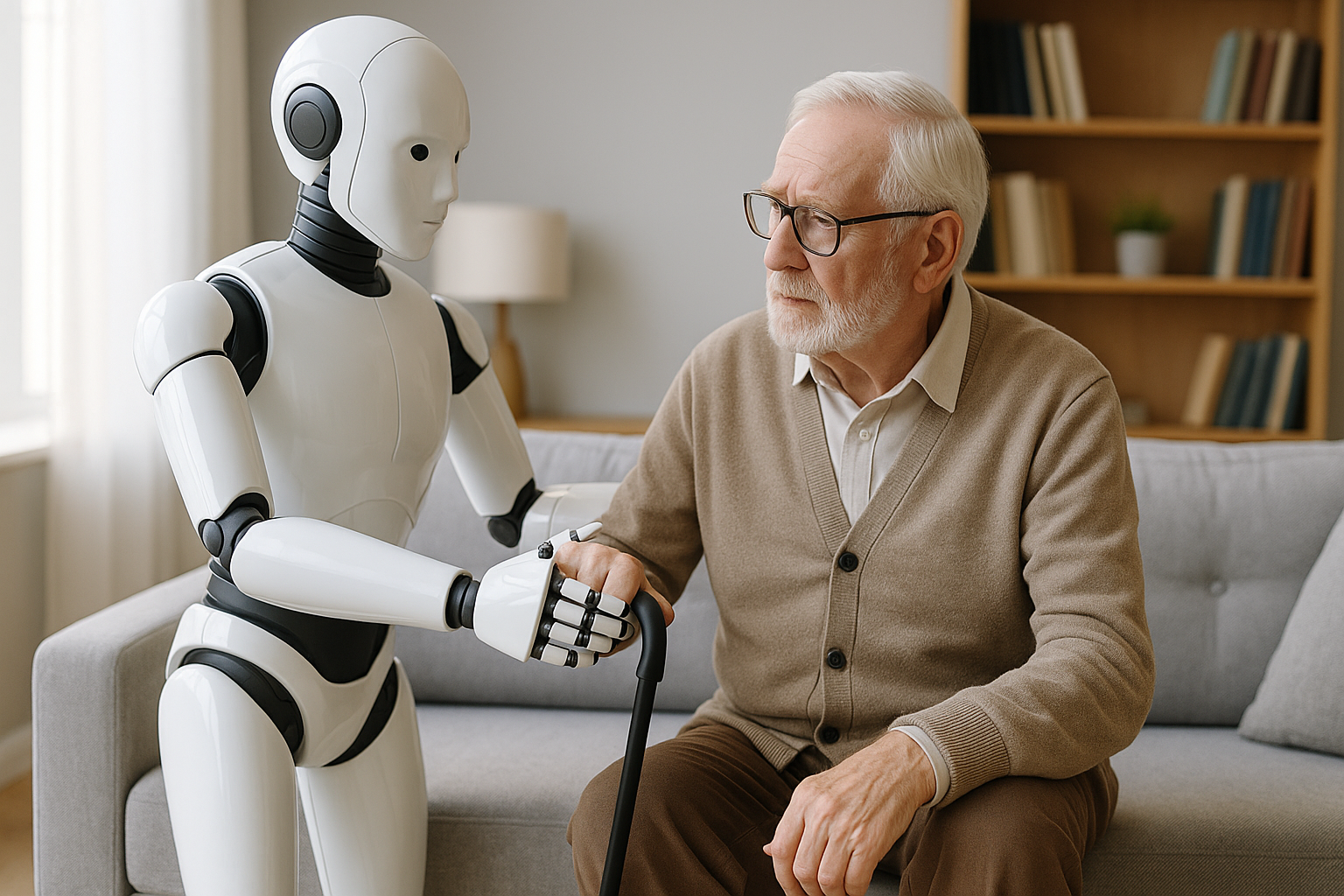The world stands on the brink of a demographic crisis. Aging populations, shrinking workforces and increasing pressure on healthcare and economic systems are forcing governments and industries to rethink how societies function. But in this challenge lies an unprecedented opportunity. According to UBS, a global financial giant, the rise of AI and humanoid robots will reshape aging societies, potentially transforming the way we work, care for the elderly, and sustain economic growth.
The Growing Labor Shortage: A $10 Trillion Problem
UBS’s recent report paints a stark picture. By 2030, global economies could face a staggering $10 trillion GDP shortfall due to workforce deficits driven by aging populations. Countries like China, Japan, Germany, and even the United States are grappling with declining birth rates and a rapidly aging workforce.
In China alone, the labor gap is expected to reach 24.5 million workers within the next decade. Developed nations face similar challenges, fueling a global scramble to find innovative solutions that go beyond conventional immigration policies or increasing retirement ages.
AI and Humanoid Robots: A Technological Lifeline
This is where AI and humanoid robots will reshape aging societies, UBS suggests. Recent advances in artificial intelligence, robotics, and machine learning are converging to create machines that can take on labor intensive tasks, particularly in sectors heavily impacted by workforce shortages.
Tesla’s Optimus Project
Elon Musk’s Tesla Optimus humanoid robot project represents a glimpse into the future. While still in its early stages, the goal is clear build robots capable of performing simple, repetitive tasks on factory floors, in logistics, and even in food service. Imagine humanoid robots assembling products, packaging goods, or assisting in fast food restaurants tasks that once heavily relied on human labor.
UBS analysts believe such technology could fill millions of vacant jobs in manufacturing and services, buying time for societies to adapt to shifting demographics.
Healthcare and Elder Care: The Human Touch Meets Robotics
Perhaps the most pressing need lies in healthcare and elder care. As populations age, demand for caregiving, medical assistance, and support for daily living is skyrocketing. Traditional systems are already stretched thin, with many families struggling to provide adequate care.
In Japan, a pioneer in both aging demographics and robotics, AI powered humanoid robots like PARO, a therapeutic robot resembling a baby seal, and Pepper, a humanoid companion robot, are providing emotional support and companionship to elderly individuals in nursing homes. While these robots cannot yet replace human caregivers, they reduce loneliness, monitor health vitals, and offer simple assistance an essential first step in reshaping aging societies.
UBS Technology Strategist
“Humanoid robots will not replace human caregivers entirely, but they can significantly enhance the efficiency and reach of healthcare services” says Dr. Sophia Lin, Technology Strategist at UBS. “AI can automate administrative tasks, monitor patient health remotely, and provide physical assistance, allowing human caregivers to focus on emotional connection and complex medical care.”
Beyond healthcare, automation through AI and humanoid robots is transforming industries like manufacturing and logistics sectors particularly vulnerable to labor shortages.
China’s Smart Factories
Facing its looming labor gap, China has aggressively invested in “smart factories” powered by AI, robotics, and automation. Companies like Foxconn, Apple’s manufacturing partner, have introduced thousands of robotic arms and AI driven systems to compensate for worker shortfalls, boosting efficiency while minimizing reliance on human labor.
UBS believes this trend will accelerate globally, with humanoid robots increasingly performing tasks that were once repetitive, physically demanding, or dangerous.
Can Robots Truly Replace Humans?
Despite the hype, it’s important to acknowledge limitations. AI and humanoid robots, while advancing rapidly, have not yet reached human level productivity at scale, especially for complex, nuanced tasks that require emotional intelligence, creativity, or empathy.
Most humanoid robots today excel at structured, repetitive tasks in controlled environments. However, in unstructured settings like unpredictable home care scenarios their performance still lags behind human capabilities. Experts warn that over reliance on robots without addressing these gaps could create new challenges rather than solving existing ones.
Living with a Robot Caregiver
In South Korea, Mr. Park, a retired teacher living alone, has been part of a government pilot program testing humanoid robot assistants. His robot, Hana, reminds him to take medication, monitors his movements for falls, and even engages in basic conversation.
“It’s not the same as human interaction,” Park admits. “But Hana gives me peace of mind, especially when I know someone or something is looking out for me when I’m alone.”
Such experiences underscore how AI and humanoid robots will reshape aging societies by offering practical, albeit imperfect, solutions to critical care gaps.
The Economic Ripple Effect
The deployment of AI and humanoid robots isn’t just about filling jobs it also reshapes economic structures. As automation boosts productivity, lowers costs, and reduces dependency on human labor, companies may redirect resources toward innovation, upskilling workers, and addressing other societal challenges.
However! this transition must be managed carefully to avoid exacerbating unemployment or social inequality.
“Technological disruption is inevitable, but policy must keep pace” warns Dr. Michael Tan, Senior Economist at UBS. “Investments in education, re-skilling programs, and robust social safety nets are essential to ensure that the benefits of AI and robotics are distributed equitably across society.”
A New Social Contract
There’s no denying that AI and humanoid robots will reshape aging societies. The convergence of demographic shifts, technological advancement, and economic necessity is driving this transformation at an unprecedented pace.
But the future isn’t entirely robotic. Humans, policymakers, and industries must work together to ensure that AI and robotics enhance not replace the human experience. Through thoughtful innovation, responsible deployment, and compassion, aging societies can leverage these tools to build a more resilient, sustainable future.


1 thought on “How AI and Humanoid Robots Will Reshape Aging Societies: UBS Report Reveals the Future of Work and Elder Care”